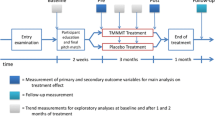Abstract
Tinnitus is associated with sensorineural hearing loss irrespective of its severity and configuration. Frequency discrimination training is a contemporary method used for the treatment of tinnitus. However, its efficacy in treating tinnitus associated with flat sensorineural hearing loss is not studied yet. The objectives were to assess (a) treatment effect across sessions on tinnitus percept using subjective questionnaires (b) association in the severity and handicap of tinnitus before and after FDT treatment. A total of 16 participants with mean age of 56 years, who had subjective tinnitus and flat sensorineural hearing loss ranging from mild to moderate were included in the study. However, only 11 participants completed the treatment regime. Each participant was provided FDT in a game format for 15 days. The Quantitative (tinnitus pitch and loudness in each session) and qualitative measurements (THI and TFI) were assessed in each participant. Friedman test revealed a significant reduction in handicap from tinnitus as reflected in THI and reduced functionality impairment from tinnitus as reflected in TFI across sessions. Besides, a significant association was observed in the Chi-square test in severity and handicap of tinnitus before and after therapy. A change in pitch and reduced loudness was noted in eight of 11 participants. Three of them had no tinnitus perception at the end of the treatment regime. The current study findings demonstrate the efficacy of FDT using a game module in treating tinnitus associated with flat sensorineural hearing loss. The perceived severity and handicap of tinnitus reduces as a function of treatment.





Similar content being viewed by others
Data Availability
All data and materials as well as software application support the published claims and comply with field standards.
Code Availability
Software application.
References
El-Shunnar SK, Hoare DJ, Smith S, Gander PE, Kang S, Fackrell K, Hall DA (2011) Primary care for tinnitus: practice and opinion among GPs in England: GP management of tinnitus. J Eval Clin Pract 17:684–692
Thirunavukkarasu K, Geetha C (2015) One-year prevalence and risk factors of tinnitus in children with otological problems. Int Tinnitus J 19:33–38
Chung DY, Gannon RP, Mason K (1984) Factors affecting the prevalence of tinnitus. Audiology 23:441–452
Noreña AJ, Moffat G, Blanc JL, Pezard L, Cazals Y (2010) Neural changes in the auditory cortex of awake guinea pigs after two tinnitus inducers: salicylate and acoustic trauma. Neuroscience 166:1194–1209
Hoare DJ, Van Labeke N, McCormack A, Sereda M, Smith S, Al Taher H, Kowalkowski VL, Sharples M, Hall DA (2014) Gameplay as a source of intrinsic motivation in a randomized controlled trial of auditory training for tinnitus. PLoS ONE 9:e107430
McNeill C, Távora-Vieira D, Alnafjan F, Searchfield GD, Welch D (2012) Tinnitus pitch, masking, and the effectiveness of hearing aids for tinnitus therapy. Int J Audiol 51:914–919
Tyler R, Stocking C, Secor C, Slattery WH III (2014) Amplitude modulated S-tones can be superior to noise for tinnitus reduction. Am J Audiol 23:303–308
Wise K, Kobayashi K, Searchfield GD (2015) Feasibility study of a game integrating assessment and therapy of tinnitus. J Neurosci Methods 249:1–7
Hoare DJ, Gander PE, Collins L, Smith S, Hall DA (2012) Management of tinnitus in English NHS audiology departments: an evaluation of current practice: tinnitus management in England. J Eval Clin Pract 18:326–334
Jastreboff PJ (2000) Tinnitus habituation therapy (THI) and tinnitus retraining therapy (THI). Tinnitus Handb 357–376
Newman CW, Jacobson GP, Spitzer JB (1996) Development of the tinnitus handicap inventory. Arch Otolaryngol Neck Surg 122:143–148
Zacharia T, Naik PV, Sada S, Kuniyil JG, Dwarakanath VM (2012) Development and standardization of tinnitus handicap inventory in Kannada. Int Tinnitus J 17(2):117–123
Funding
No funding was received to assist with the preparation of this manuscript.
Author information
Authors and Affiliations
Corresponding author
Ethics declarations
Conflicts of interest
The authors have no conflicts of interest to declare that are relevant to the content of this article.
Ethical Approval
The methodology for this study was approved by the Human Research Ethics committee of the Institution.
Consent for publication
Patients signed informed consent regarding publishing their data.
Consent to participate
Informed consent was obtained from all individual participants included in the study.
Additional information
Publisher's Note
Springer Nature remains neutral with regard to jurisdictional claims in published maps and institutional affiliations.
Rights and permissions
About this article
Cite this article
Hemanth, N., Vipin Ghosh, P.G. Effect of Frequency Discrimination Training on Tinnitus in Individuals with Flat Sensorineural Hearing loss. Indian J Otolaryngol Head Neck Surg 74, 70–77 (2022). https://doi.org/10.1007/s12070-021-02433-y
Received:
Accepted:
Published:
Issue Date:
DOI: https://doi.org/10.1007/s12070-021-02433-y



